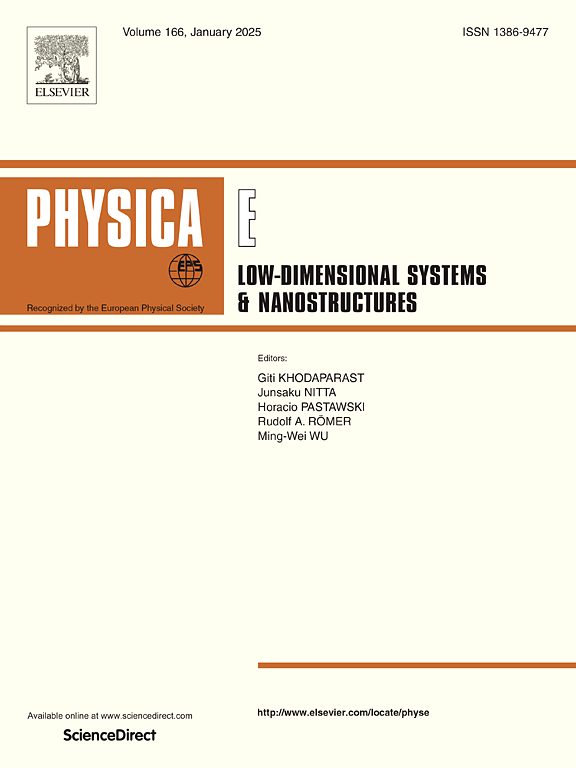Stacking pattern effects on the charge carrier dynamics of the MoS2/BSe heterostructure
IF 2.9
3区 物理与天体物理
Q3 NANOSCIENCE & NANOTECHNOLOGY
Physica E-low-dimensional Systems & Nanostructures
Pub Date : 2025-02-01
DOI:10.1016/j.physe.2024.116166
引用次数: 0
Abstract
The efficiency of electron-hole (e-h) pair separation at the interface of van der Waals (vdW) heterostructures is crucial in determining the solar energy conversion efficiency. In this work, based on the nonadiabatic molecular dynamics (NAMD) simulations, we have studied the photoinduced carrier dynamics of MoS2/BSe, and the effect of stacking configuration is further analyzed. The results demonstrate that the MoS2/BSe heterostructure is consistent with a type-II photogenerated carrier transfer mechanism, with ultrafast interlayer electron and hole transfer time scales of ∼50 fs and ∼200 fs, respectively, displaying a weak stacking dependence. Additionally, switching from AA to AB stacking delays the carrier lifetime of the heterostructure by about a factor of two, from 52.14 ns to 98.39 ns, which can be rationalized by the smaller wave function overlap and fast decoherence time of AB stacking. The present offering insights on the development of high-performance solar energy photovoltaic conversion devices on vdW heterostructures.

求助全文
约1分钟内获得全文
求助全文
来源期刊
CiteScore
7.30
自引率
6.10%
发文量
356
审稿时长
65 days
期刊介绍:
Physica E: Low-dimensional systems and nanostructures contains papers and invited review articles on the fundamental and applied aspects of physics in low-dimensional electron systems, in semiconductor heterostructures, oxide interfaces, quantum wells and superlattices, quantum wires and dots, novel quantum states of matter such as topological insulators, and Weyl semimetals.
Both theoretical and experimental contributions are invited. Topics suitable for publication in this journal include spin related phenomena, optical and transport properties, many-body effects, integer and fractional quantum Hall effects, quantum spin Hall effect, single electron effects and devices, Majorana fermions, and other novel phenomena.
Keywords:
• topological insulators/superconductors, majorana fermions, Wyel semimetals;
• quantum and neuromorphic computing/quantum information physics and devices based on low dimensional systems;
• layered superconductivity, low dimensional systems with superconducting proximity effect;
• 2D materials such as transition metal dichalcogenides;
• oxide heterostructures including ZnO, SrTiO3 etc;
• carbon nanostructures (graphene, carbon nanotubes, diamond NV center, etc.)
• quantum wells and superlattices;
• quantum Hall effect, quantum spin Hall effect, quantum anomalous Hall effect;
• optical- and phonons-related phenomena;
• magnetic-semiconductor structures;
• charge/spin-, magnon-, skyrmion-, Cooper pair- and majorana fermion- transport and tunneling;
• ultra-fast nonlinear optical phenomena;
• novel devices and applications (such as high performance sensor, solar cell, etc);
• novel growth and fabrication techniques for nanostructures

 求助内容:
求助内容: 应助结果提醒方式:
应助结果提醒方式:


